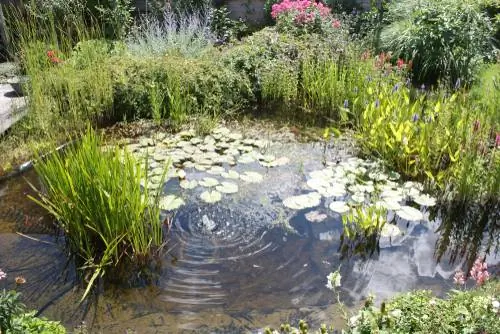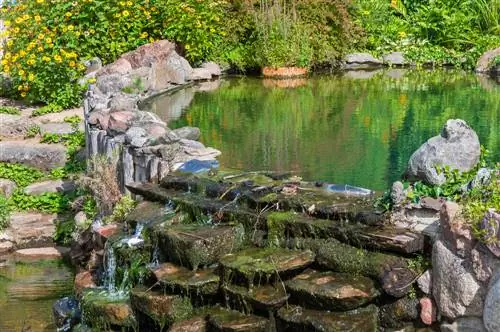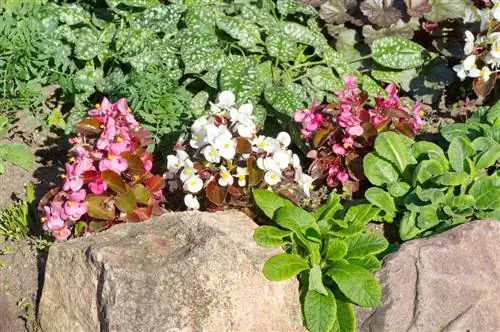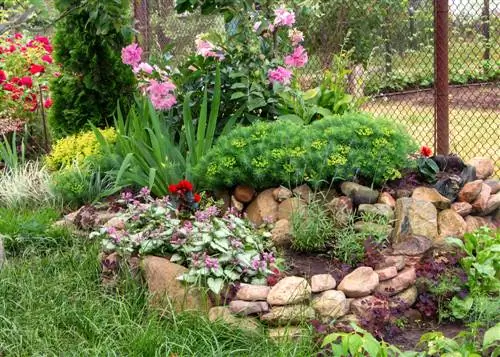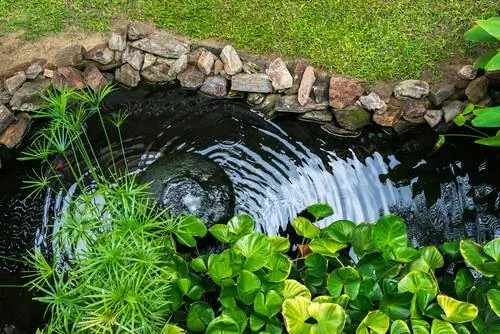- Author admin [email protected].
- Public 2023-12-16 16:46.
- Last modified 2025-01-23 11:21.
How a garden pond border can be designed depends on both personal taste and practical factors. Especially if you want to build everything on the pond yourself, there is a lot of scope that has to be balanced with functional circumstances.
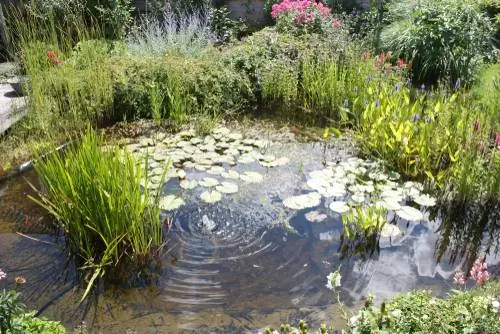
How do you design a pond border?
A pond border can be designed depending on the type of pond (fish pond, natural pond, swimming pond, formal ornamental pond), taking into account nutrient regulation, species appropriateness, natural style or artistic design. Materials such as plants, wood or stone slabs are suitable depending on the type of pond.
Pond border depending on pond type
Depending on what type of pond you want to have, other requirements must be taken into account when designing the edge.
The types of ponds that need to be categorized in functional and aesthetic terms are:
- fishpond
- Natural pond
- Swimming pond
- Formal (ornamental) pond
fishpond
In a fish pond, the bank design is special in that it has to be tailored to the animals in terms of nutrient regulation and species welfare. So it generally makes sense to put lots of heavy-consuming aquatic plants in a fish pond, as there tends to be an excess of nutrients in the water due to the fish food and feces. This puts a strain on the water quality and also on the fish themselves.
You should plant species of nutrient-utilizing plants in every pond zone. At the edge of the water, suitable species such as reeds or calamus also serve to offer the fish hiding places for rest and spawning.
Natural pond
If you want to build your own natural pond, the foil method is the most common option. You can freely choose the shape and size. Naturalness has priority here, both in the overall design and in the bank design. And that from a functional and aesthetic point of view. On the one hand, you should keep the edge of the water close to nature for the independent functioning of the biotope. On the other hand, the natural style only comes into its own with a bank that is close to that of natural ponds.
You should be careful with excessive stone structures such as sea walls, as they appear inauthentic and take up valuable space that could be better used with marsh plants that provide shelter for fish and amphibians. It is best to plant cattails, calamus or water ferns on the edge of the natural pond. These plants draw nutrients from the pond water and prevent algal blooms.
Swimming pond
The most important thing about the edge of a swimming pond is of course at least one place to get in and out of. A classic wooden walkway is ideal for a romantic, natural design. Or maybe you would like a comfortable place to lie down right next to the water? Then we recommend extending the jetty that extends into the water to include a terrace made of the same wood. If necessary, include a ladder in your planning that must be attached to the jetty.
Formal (ornamental) pond
The focus of the ornamental pond is on artistic design. The border of such a pond is therefore usually completely closed. This allows the shape of the pond to be precisely defined and its geometry highlighted. Flat stone slabs are ideal as edge material for formal precision. Ponds with a rectangular design in particular can gain even more architectural, cool elegance with fine-edged edge panels. Individual decorative objects can then be placed or installed exposed on the edge strips, such as spit figures or pots with accurately cut Bux tree bushes.

